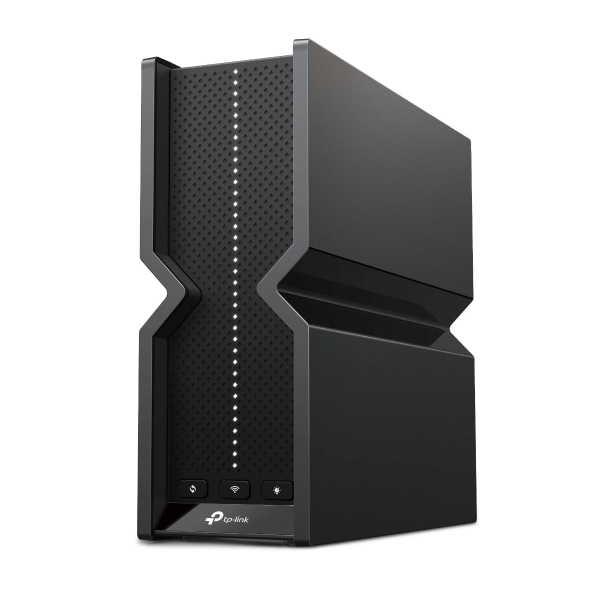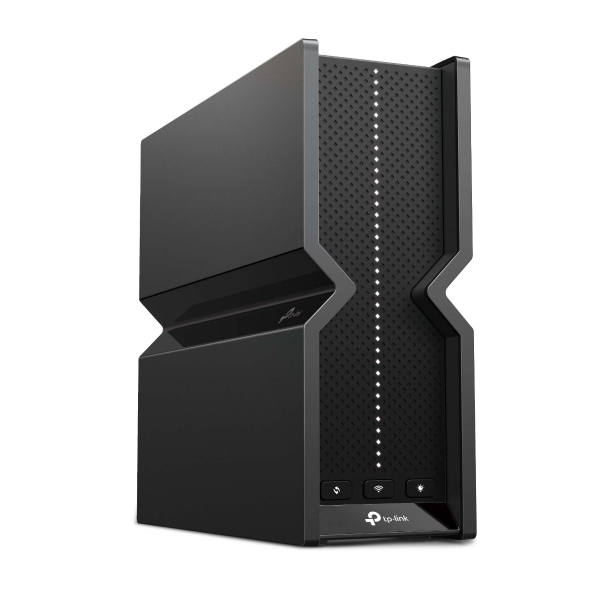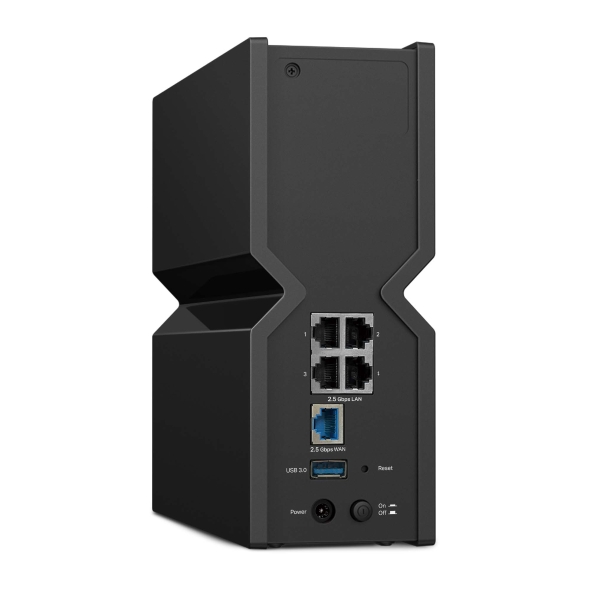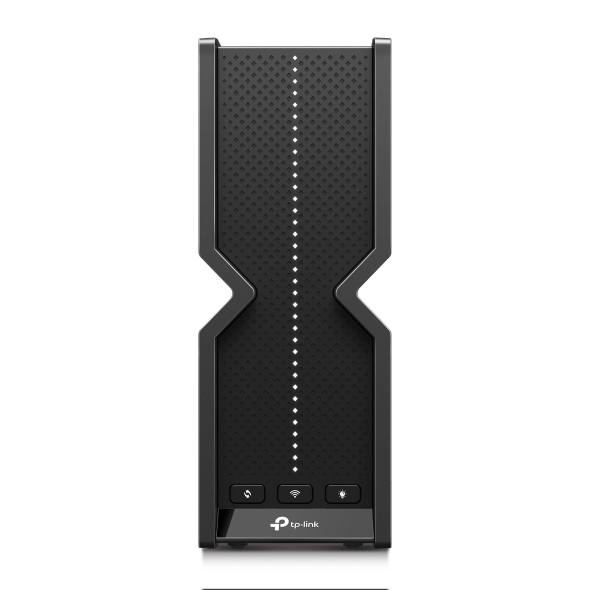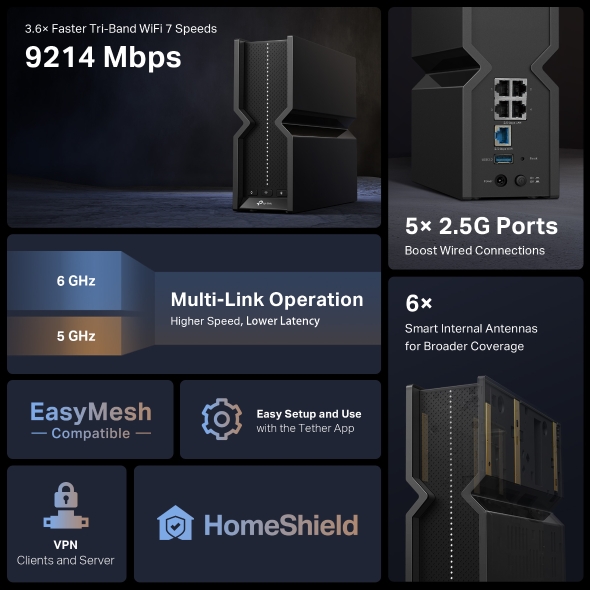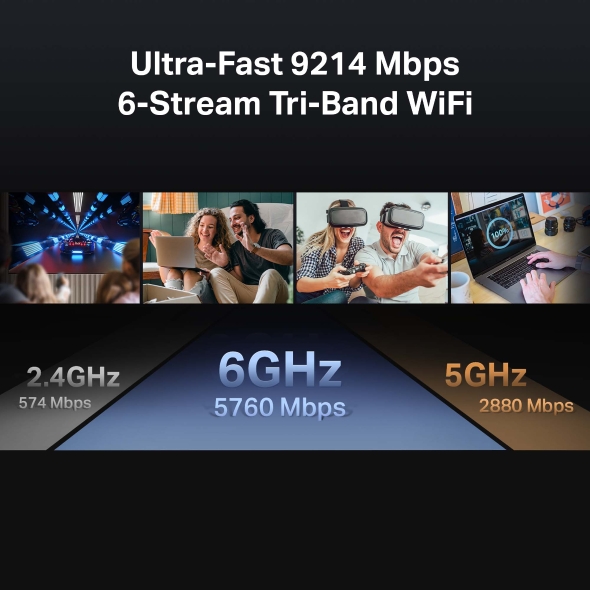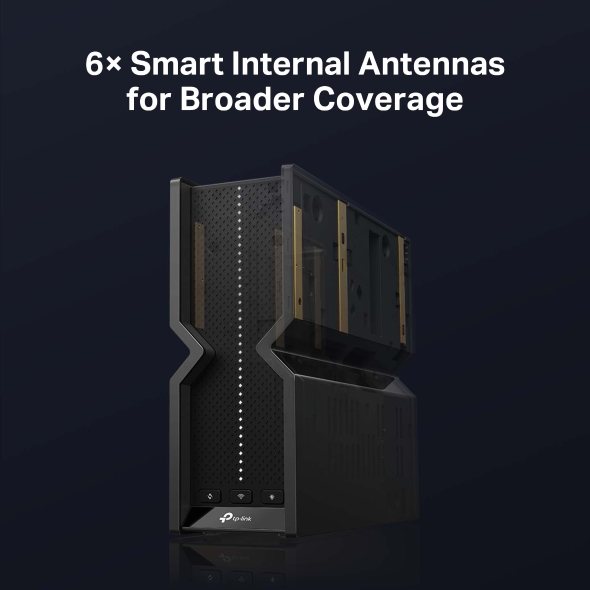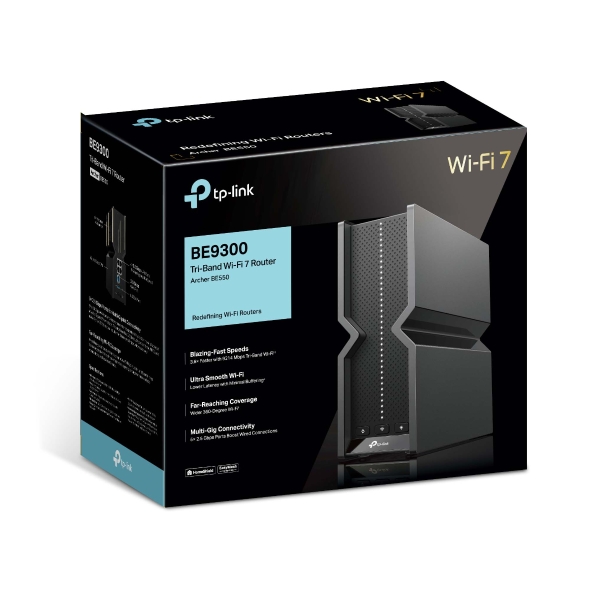Archer BE550
BE9300 Tri-Band Wi-Fi 7 Router
- Redefining WiFi Routers: With powerful WiFi 7 performance, lightning-fast wired connections, and brand-new design.
- Blazing-Fast 9214 Mbps Tri-Band WiFi 7: Enables your devices to run at full speed. Enjoy fluent 4K/8K streaming, immersive AR/VR gaming, and blazing-fast downloads.†
- Multi-Link Operation (MLO): Increases throughput, reduces latency, and improves reliability for emerging applications.‡
- 5× 2.5G Ports: 1× 2.5 Gbps WAN port and 4× 2.5 Gbps LAN ports break through the 1G bottleneck, driving your devices to peak performance.
- Maximized Coverage: Proprietary WiFi optimization and optimally positioned antennas along with Beamforming deliver more capacity, stronger and more reliable connections, and less interference.
- EasyMesh-Compatible: Works with EasyMesh routers and range extenders to form seamless whole home Mesh WiFi, preventing drops and lag when moving between signals.
-
Easy Setup and Use: Network management has never been easier with the Tether app.
- TP-Link HomeShield: Enhanced security defends against the latest cyber threats.*
†Maximum wireless signal rates are the physical rates derived from IEEE Standard 802.11 specifications. Actual wireless data throughput, wireless coverage, and connected devices are not guaranteed and will vary as a result of network conditions, client limitations, and environmental factors, including building materials, obstacles, volume and density of traffic, and client location.
‡3.6× faster Wi-Fi speed refers to the theoretical speeds of Wi-Fi 7 clients when connected to Archer BE550 compared with a Wi-Fi 6 or Wi-Fi 6E router. Wi-Fi 7 clients need to support Multi-Link Operation (MLO) and the 6 GHz band to reach up to 8.6 Gbps when connected to the 5 GHz and 6 GHz bands of Archer BE550 simultaneously. Wi-Fi 6 and Wi-Fi 6E routers may only provide 2402 Mbps on the 5 GHz or 6 GHz bands separately.
△Lower Latency refers to the latency improvement of Wi-Fi 7 routers compared to Wi-Fi 6/6E routers, based on laboratory test data. The test conditions had the same 5 GHz or 6 GHz single-frequency wireless interference and tested the maximum latencies of Wi-Fi 7 clients (with MLO turned on) connecting to the 5 GHz and 6 GHz bands of Archer BE550 (with MLO turned on) simultaneously and to the 5 GHz or 6 GHz bands of a Wi-Fi 6/6E router (without the MLO function).
§Use of WiFi 7 (802.11be), WiFi 6 (802.11ax), and features including MLO, 320 MHz Bandwidth, 4K-QAM, Multi-RU, OFDMA, and MU-MIMO requires clients to also support the corresponding features.
◇The 320 MHz bandwidth is only available on the 6 GHz band. Simultaneously, the 320 MHz bandwidth on the 6 GHz band and 160 MHz bandwidth on the 5 GHz band may be unavailable in some regions/countries due to regulatory restrictions. Double channel width and speed refer to 320 MHz compared to 160 MHz for WiFi 6 routers.
☆2.5 Gbps internet speeds require compatible service plans and equipment. Actual internet speeds are limited by the internet bandwidth access from an Internet Service Provider.
※TP-Link EasyMesh-compatible products can network with other devices that use EasyMesh. Failed connections may be due to firmware conflicts of different vendors. The EasyMesh-compatible function is still being developed on some models and will be supported in subsequent software updates.
*HomeShield includes the Free Basic Plan. Fees apply for the Pro Plan. Visit tp-link.com/homeshield for more information.
**Use of WPA3 requires clients to also support the corresponding feature.
***WiFi generations represent the wireless standard IEEE 802.11 a/b/g/n/ac/be. All devices need to support 802.11 WiFi protocols.
****A separate modem or gateway may be required. PPPoE, Static IP, and Dynamic IP are supported. PPTP and L2TP may also be supported under certain configurations.
Actual network speed may be limited by the rate of the product's Ethernet WAN or LAN port, the rate supported by the network cable, Internet service provider factors and other environmental conditions.
This router may not support all the mandatory features as ratified in the IEEE 802.11be specification.
Further software upgrades for feature availability may be required.
